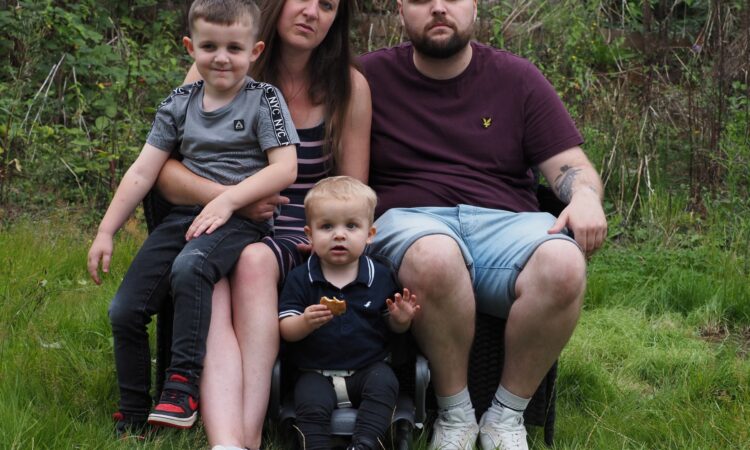
WITH interest rates at their highest level for 15 years, millions of borrowers are feeling the squeeze.
A third of homeowners are caught in a mortgage affordability trap as they struggle to cover housing costs, according to official figures.
Many borrowers who took out their last mortgage deal two years ago would have been able to fix at below two per cent, but now face paying an average of 8.09 per cent if they lapse on to their lender’s standard rate.
For someone with a £150,000 loan that means a payment jump of £531 a month to more than £1,167.
Struggling borrowers can seek help from their lenders and there are various ways they could temporarily lower payments.
Leah Milner looks at how to ride out the mortgage storm and calculate the long-term impact . . .
WHAT TO DO BEFORE YOUR DEAL ENDS
IF your mortgage deal is ending in the next six months, start looking at your options as early as possible to avoid rolling on to a really high rate, warns Aaron Strutt of broker Trinity Financial.
He says: “Find out what rate your current lender is offering you as a new deal and then check out how this compares to other rates in the market.”
See current rate comparison sites like moneyfactscompare.co.uk and moneysupermarket.com or search on unbiased.co.uk to find an independent mortgage adviser.
Aaron says: “Staying with your current lender normally means you don’t have to go through a new valuation on your home or extra income checks, so it can save on hassle and costs if the rates are similar to what rivals are offering.
“Lenders will often let you secure a new mortgage offer up to six months in advance.
“As rates are forecast to rise further before hopefully dropping next year, this could be a good way of hedging your bets.”
FIX OR TRACKER?
FIXED rate mortgages offer the peace of mind of knowing exactly how much your monthly payments will be for a set period, which can make budgeting easier.
On the other hand, with trackers your payments could rise or fall depending on what happens to rates.
Moneyfacts shared its pick of the best rates for borrowers with a 25 per cent deposit, factoring in fees and not just rates.
It found the cheapest two-year fix is 5.81 per cent from Santander, with a £999 fee.
The cheapest five-year fix is from Barclays at 5.19 per cent with an £899 fee.
And its pick of trackers is from Nationwide Building Society at 5.44 per cent and a £999 fee.
Borrowers who linger on their lender’s standard variable rate would pay a lot more.
The worst one we found from a mainstream lender is 9.24 per cent from Virgin Money, Clydesdale and Yorkshire banks, which are part of the same group.
By switching from this to the cheapest two-year fix a borrower with a £150,000 loan could save £334 a month, cutting payments from £1,283 to £949.
Best rates and worst rates
BEST RATES (with 25% deposit)
2yr fixed 5.81%: Santander (£999 fee)
5yr fixed 5.19%: Barclays (£899 fee)
Tracker 5.44%: Nationwide (£999 fee)
WORST RATE
Variable 9.24%: Virgin Money, Clydesdale & Yorkshire Banks
£334: Amount saved each month by switching from worst variable rate to best 2yr fixed
SEEKING HELP WITH SOARING BILLS
MAJOR lenders have agreed to offer several temporary options to help struggling borrowers bring down monthly costs.
They can allow borrowers to switch from repayment to interest-only for a period of six months, which means they won’t be reducing their overall debt, just keeping on top of interest.
Or they can allow them to extend their mortgage term with the option of reducing it again after six months.
For a borrower with a £150,000 mortgage on the average SVR of 8.09 per cent, switching to interest only would reduce monthly costs from £1,167 to £1,012.
Extending the repayment term from 25 to 35 years would cut monthly bills from £1,167 to £1,076 based on the same mortgage.
The long-term impact of choosing either depends on what happens to rates over the next decade — but both could add thousands of pounds to the total cost of clearing your mortgage.
Andrew Montlake of broker Coreco, says: “These measures could help you get through this difficult period of soaring interest rates.
“But if possible, you should look to move back to a repayment mortgage or reduce your term again as soon as possible to avoid paying extra over the long term.”
Borrowers on Universal Credit can also speak to their work coach about the Support for Mortgage Interest scheme to help with costs but as it’s a loan it will also need to be repaid in the long run.
‘Help to Buy chaos left us stuck with high repayments’
PAPERWORK delays left the Gibb family stuck on a soaring mortgage rate for the past three months.
Delivery driver Nicola, 35, and accounts manager Phil, 30, saw their payments jump from £572 a month to more than £1,000 when their last deal expired in May.
The couple, who live in Plymouth with sons Bear, four, and 18-month-old Tate, had secured a new deal with NatWest for £609 a month.
They had bought their home for £198,000 in 2019 using the Help to Buy scheme.
But administrative delays by the new company running the scheme, Lenvi, meant they couldn’t get a vital document to allow them to remortgage – so they were stuck on their lender’s standard rate.
Nicola said: “We took out an extra credit card just to cover our weekly shop and petrol.”
Their switch completed this week. Lenvi says it has had more cases to deal with than there were under the scheme’s previous management and is working through the backlog.






